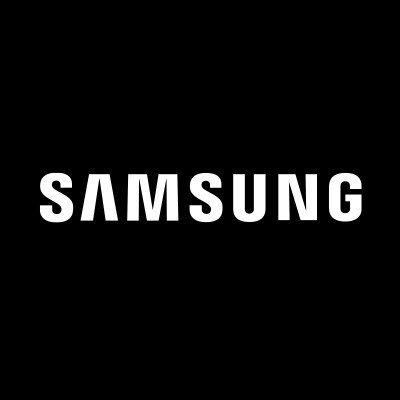The Semiconductor Showdown: A Tale of Giants and Geopolitics
December 2, 2024, 9:46 am

Location: United States, California, San Francisco
Employees: 10001+
Founded date: 1938
Total raised: $6.4B

Location: United States, California, San Jose
Employees: 10001+
Founded date: 1983
Total raised: $450M
In the world of technology, semiconductors are the lifeblood. They power everything from smartphones to supercomputers. As the demand for chips surges, a fierce battle brews between industry titans and nations. This is a story of ambition, strategy, and the quest for dominance.
Samsung Electronics, a behemoth in the semiconductor realm, is facing a storm. The company recently shuffled its leadership in a bid to regain its footing in the memory chip market. The appointment of Jun Young-hyun as co-CEO signals a desperate attempt to steer the ship through turbulent waters. Samsung is not just fighting against competitors like SK Hynix and TSMC; it’s grappling with internal pressures and external challenges.
The semiconductor industry is a high-stakes game. It’s a race where the finish line keeps moving. AI technology is the new gold rush. Companies are scrambling to secure their place in this lucrative market. Samsung’s reshuffle is a response to this urgency. The company aims to revitalize its memory chip business, which has been struggling to keep pace with its rivals.
Meanwhile, across the Pacific, the United States is tightening its grip on China’s semiconductor ambitions. The Biden administration is unleashing a new wave of sanctions aimed at crippling China’s chip industry. This latest crackdown targets 140 companies, including key players in chip manufacturing. The goal is clear: limit China’s ability to produce advanced chips that could bolster its military capabilities.
The sanctions are a strategic move in a broader geopolitical chess game. The U.S. is not just protecting its interests; it’s sending a message. The message is that access to cutting-edge technology comes with strings attached. The new rules will impact companies like Lam Research and KLA, as well as non-U.S. firms. The aim is to stifle China’s progress in AI and other critical technologies.
China, however, is not sitting idle. The country has ramped up its efforts to achieve semiconductor self-sufficiency. It’s a race against time. Despite the restrictions, China is determined to build its own chip industry. The government is pouring resources into research and development. The ambition is to create a robust semiconductor ecosystem that can rival the likes of Nvidia and ASML.
The U.S. sanctions are a double-edged sword. While they aim to curb China’s technological rise, they also risk alienating allies. Countries like Japan and the Netherlands, which play crucial roles in chip manufacturing, are caught in the crossfire. The expanded foreign direct product rule could limit what these nations can export to China. It’s a delicate balance of power, and the stakes are high.
As the semiconductor landscape evolves, the competition intensifies. Samsung’s leadership changes reflect a recognition of the need for agility. The company is under pressure to innovate and adapt. The AI chip market is booming, and those who can’t keep up will be left behind. The new appointments at Samsung are a signal of its commitment to reclaiming its position as a leader in the industry.
In this environment, collaboration is key. Companies must forge partnerships to share knowledge and resources. The semiconductor industry thrives on innovation, and innovation often comes from collaboration. As the U.S. and China engage in a tit-for-tat struggle, the potential for breakthroughs may lie in unexpected alliances.
The semiconductor showdown is not just about chips; it’s about power. It’s a reflection of broader geopolitical tensions. The U.S. seeks to maintain its technological edge, while China strives for independence. Each move in this game has far-reaching consequences. The world watches as these giants clash.
In the end, the semiconductor industry is a microcosm of global dynamics. It embodies the interplay of technology, economics, and politics. As Samsung navigates its internal challenges and the U.S. enforces its sanctions, the future remains uncertain. The only certainty is that the race for semiconductor supremacy will continue.
The stakes are high, and the players are formidable. In this arena, only the most adaptable will thrive. The semiconductor industry is a battleground, and the fight for dominance is far from over. As the dust settles, new leaders will emerge, and the landscape will shift once again. The game is on, and the world is watching.
Samsung Electronics, a behemoth in the semiconductor realm, is facing a storm. The company recently shuffled its leadership in a bid to regain its footing in the memory chip market. The appointment of Jun Young-hyun as co-CEO signals a desperate attempt to steer the ship through turbulent waters. Samsung is not just fighting against competitors like SK Hynix and TSMC; it’s grappling with internal pressures and external challenges.
The semiconductor industry is a high-stakes game. It’s a race where the finish line keeps moving. AI technology is the new gold rush. Companies are scrambling to secure their place in this lucrative market. Samsung’s reshuffle is a response to this urgency. The company aims to revitalize its memory chip business, which has been struggling to keep pace with its rivals.
Meanwhile, across the Pacific, the United States is tightening its grip on China’s semiconductor ambitions. The Biden administration is unleashing a new wave of sanctions aimed at crippling China’s chip industry. This latest crackdown targets 140 companies, including key players in chip manufacturing. The goal is clear: limit China’s ability to produce advanced chips that could bolster its military capabilities.
The sanctions are a strategic move in a broader geopolitical chess game. The U.S. is not just protecting its interests; it’s sending a message. The message is that access to cutting-edge technology comes with strings attached. The new rules will impact companies like Lam Research and KLA, as well as non-U.S. firms. The aim is to stifle China’s progress in AI and other critical technologies.
China, however, is not sitting idle. The country has ramped up its efforts to achieve semiconductor self-sufficiency. It’s a race against time. Despite the restrictions, China is determined to build its own chip industry. The government is pouring resources into research and development. The ambition is to create a robust semiconductor ecosystem that can rival the likes of Nvidia and ASML.
The U.S. sanctions are a double-edged sword. While they aim to curb China’s technological rise, they also risk alienating allies. Countries like Japan and the Netherlands, which play crucial roles in chip manufacturing, are caught in the crossfire. The expanded foreign direct product rule could limit what these nations can export to China. It’s a delicate balance of power, and the stakes are high.
As the semiconductor landscape evolves, the competition intensifies. Samsung’s leadership changes reflect a recognition of the need for agility. The company is under pressure to innovate and adapt. The AI chip market is booming, and those who can’t keep up will be left behind. The new appointments at Samsung are a signal of its commitment to reclaiming its position as a leader in the industry.
In this environment, collaboration is key. Companies must forge partnerships to share knowledge and resources. The semiconductor industry thrives on innovation, and innovation often comes from collaboration. As the U.S. and China engage in a tit-for-tat struggle, the potential for breakthroughs may lie in unexpected alliances.
The semiconductor showdown is not just about chips; it’s about power. It’s a reflection of broader geopolitical tensions. The U.S. seeks to maintain its technological edge, while China strives for independence. Each move in this game has far-reaching consequences. The world watches as these giants clash.
In the end, the semiconductor industry is a microcosm of global dynamics. It embodies the interplay of technology, economics, and politics. As Samsung navigates its internal challenges and the U.S. enforces its sanctions, the future remains uncertain. The only certainty is that the race for semiconductor supremacy will continue.
The stakes are high, and the players are formidable. In this arena, only the most adaptable will thrive. The semiconductor industry is a battleground, and the fight for dominance is far from over. As the dust settles, new leaders will emerge, and the landscape will shift once again. The game is on, and the world is watching.